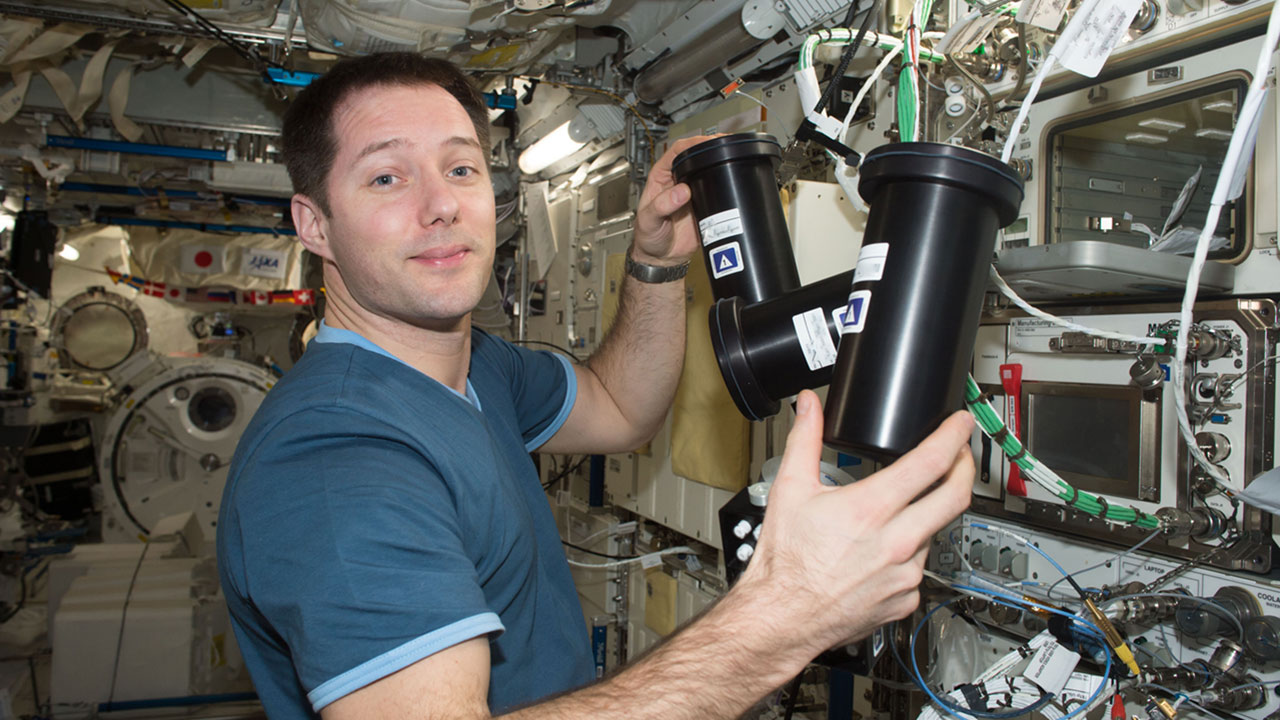The Dec. 4 launch attempt has been scrubbed due to winds. The next launch opportunity will be at 12:29 p.m. EST on Thursday, Dec. 5.
SpaceX’s 19th commercial resupply services (CRS) mission, currently scheduled to launch from Cape Canaveral Air Force Station in Florida no earlier than Wednesday, December 4, will carry with it a wide variety of payloads sponsored by the International Space Station (ISS) U.S. National Laboratory. This launch will bring to a close the most prolific year of ISS National Lab research to date—more ISS National Lab-sponsored investigations were sent to the orbiting laboratory in 2019 than in any previous year.
ISS National Lab investigations launching on SpaceX CRS-19 include projects in the life, physical, and materials sciences aiming to leverage the unique space environment to benefit life on Earth. Below highlights some of the ISS National Lab payloads included on this mission.
- An investigation from Budweiser is aimed at examining the barley malting process in microgravity and will test a microscale, automated malting procedure on the ISS. This is the latest project in a series of investigations Budweiser has sent to the ISS National Lab over the past three years to evaluate barley germination and gene expression in space. In this current investigation, Budweiser plans to compare malt produced in space with controls produced on Earth to identify morphological and genetic alterations induced by microgravity conditions. Results from this research could have implications in food production both on Earth and in space.
- The Jackson Laboratory is sending 40 female mice to the ISS, including some “mighty mice” that were genetically engineered to lack the gene that produces myostatin, a growth factor that normally acts to limit muscle growth in both mice and humans. Without myostatin, the mighty mice develop larger muscle mass compared with normal mice. This investigation is aimed at examining the potential benefits of targeting the myostatin signaling pathway to help prevent diseases on Earth that involve skeletal muscle and bone loss. In the microgravity environment on the ISS, bone and skeletal muscle loss occur more rapidly than on the ground, providing accelerated models of disease that could help lead to improved therapeutics for patients on Earth.
- A project funded through the National Stem Cell Foundation will represent the first long-term cell culture investigation in microgravity using human patient-derived induced pluripotent stem cells to study Parkinson’s disease and multiple sclerosis. Through this experiment, the research team hopes to gain valuable insight into the mechanisms by which neuronal cells mature in 3D cultures as well as changes in gene expression that may play a role in Parkinson’s and multiple sclerosis. Results from this investigation could aid in the discovery and development of biomarkers and therapeutics for patients on Earth with these conditions.
- An experiment from Case Western Reserve University funded by the National Science Foundation is aimed at studying flame spread in confined spaces, such as buildings and vehicles, where fire can be accelerated. Some aspects of flame spread are challenging to study on Earth in normal gravity. By doing studies in microgravity, where buoyancy is eliminated, researchers can better understand the physics of flame spread. Knowledge gained from this investigation could help lead to improved fire safety codes and better infrastructure design, which could help save lives, prevent injury, and reduce property loss from fire.
Learn more about the ISS National Lab investigations launching on SpaceX CRS-19 on our launch page.





